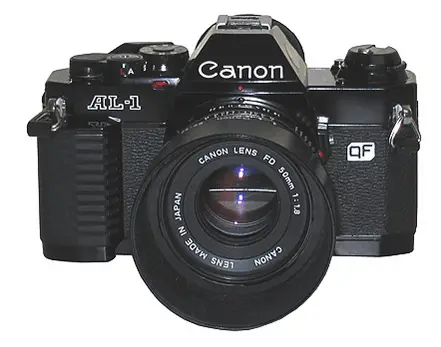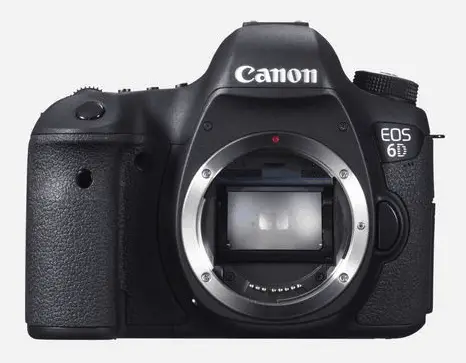I thought I would start my series of photography questions with a fundamental one – what does DSLR mean in photography?
DSLR translated into actual English is digital single lens reflex camera.
So, what does this mean?
I will explain this in this blog post, as well as digressing all over the place with related photography stuff!
Back in the day
Basically, in the days before digital photography cameras used film. Yes film. You used to buy a roll of film from a shop, with either 24 or 36 exposures, open the back of the camera, put the film in, pull a bit out and attach it to the spool then close the back and wind on. And getting the prints was even more long winded.
But we survived. Well we didn’t know any better!
A bit more about camera film – trust me this will all make sense
There were a number of different sizes of film, but the most common camera film was called 35mm film was 35mm.
SLR cameras, single lens reflex cameras, used 35mm film. A 35mm film negative (i.e. the actual bit of film on which the image was recorded) is 36mm x 24mm.
And this is the strangest of evolutions from film to digital SLRs
Why is a full frame camera sensor the size it is?
The size of a 35mm film negative is the same size as a sensor on a full frame camera.
If you ever wondered why a full frame sensor on a digital camera is the size it is now you know.
And the question I have always asked myself is this – why? Why would the sensor on a DSLR be the same as the film on an SLR?
Why not is the answer. Evolution of familiar sizes.
Anyway, back to the camera – why the mirror in an SLR?
A single lens reflex camera basically has a mirror which allows you to see through the lens. Press the shutter and the mirror flips up and the image is exposed on the film behind.
This is a picture of my Canon AL-1. This was a film SLR that was the first of its kind to have assisted focussing – when you got the manual focus correct a green light came on!!

And with a DSLR exactly the same happens, except that rather than film there is a digital sensor.
That is SLR cameras in a nutshell.
Why does a camera need a mirror?
I believe that the fore-runner to SLR cameras were twin lens reflex cameras. Why two lenses? Simple. You looked through one, and the other took the picture.
The only problem with this was you were not looking at exactly what you were capturing. So, the SLR was a technical and optical improvement, with the clever use of mirrors and prisms allowing the user to see exactly what was going to be taken.
With one minor exception

Taking my Canon 6D as an example, the actual view in the viewfinder is only 97%. I am not actually seeing all of the scene I am trying to photograph.
My Canon 5D gave me a 96% view, as did my Canon 60D.
The Canon 1DS gives 100%.
All is not quite as it seems, as is so often the case.
What other types of cameras are there apart from SLRs?
Back in the film day there were lots of other camera formats.
110 – lower standard cameras with a cartridge film. I used to have one of these. And compared to an iPhone they were quite rubbish.
APS cameras, where you could manually change the format of the image. These cameras came with a special film and the processed negatives and prints were provided in boxes – all rather interesting. I still have some from a long old time ago!
Twin lens reflex cameras
I never owned one of these, I am not that old.
There are also medium format, large format 10 x 8 format – lots of formats. Basically, 35mm was for SLRs until DSLRs.
And now what other formats are there?
Mirrorless cameras – more about these in a separate post
Medium format – very expensive
Micro four thirds – a format I know nothing about. Yes, I know – I will have to find out all about it and write about it here.
Were SLRs the best cameras in film days?
- SLR cameras were viewed as being higher quality, professional/ semi-professional cameras.
- SLR cameras typically had interchangeable lenses, which was not normally the case with other types of cameras.
- SLR cameras had more control of image capture, with manual exposure possible setting the aperture, shutter speed and film speed.
- SLR cameras bridged the gap from consumers to pros. There were more manufacturers of SLR cameras in film days, including
- Canon
- Nikon
- Pentax
- Olympus
- Minolta
- Fuji (my first ever SLR was a Fuji)
About manual mode
Now I have a thing about all those people who preach that to be a photographer you should shoot in manual mode. Nonsense. That is going to be the next question I ask.
What about mirrorless cameras then?
Mirrorless cameras don’t have a mirror. It really is that simple.
You don’t look through the viewfinder and the actual lens via a mirror – no – instead you look through an electronic viewfinder. And at some pint in the future DLSRs will be come obsolete, and I expect that we will all be calling our mirrorless cameras something different – cameras!
And there are other mirrorless format – micro four thirds?
I guess that after manual mode I need to jump straight into micro four thirds – to be completely honest all I know about this format is that the sensor is smaller than a crop sensor,
No let’s do this the other way – camera formats explained or something like that.
Hangovers from the film days in photography
Writing this brought back some thoughts I have had for some time that I will digress briefly not now.
I find it interesting that there are quite a few things which are hangovers from the days of film that we still have.
Sensor size
The same as 35mm film – why?
ISO
The new name for film speed (it was also called ASA back in the day) – why do we still have this now we are in the world of digital photography. Surely it is time to get rid of ISO? If we were to start again with ISO, Aperture and shutter speed surely there would be some other way of getting the exposure.
Mirrors.
Yes, it seems bizarre with the things that we do with our phones that high end cameras still have actual mirrors that flip up. Think of the iPhone the capabilities built into what is a phone.
What about the future of DSLRs?
Basically, the future of DSLRs in my opinion is short. Canon yesterday announced its new mirrorless cameras, Nikon did the same last month. And apart from Canon and Nikon everyone else is producing “mirrorless” or “micro-four-thirds” cameras. Well virtually everyone.
Let’s think about phones for a minute
Do you know the aperture your phone uses when you take a photo? Off the top of my head I don’t know the aperture my iPhone 7 Plus uses.
Shouldn’t I know this?
I don’t really care to be honest – it does a pretty amazing job.
And ISO on my iPhone? No idea.
Sutter speed – nope – don’t know.
And the iPhone 7 Plus takes great photos.
Sure, this can be replicated on a DSLR using one of the Programme Modes.
But isn’t it about time we updated the way we take photos?
I think once DSLRs have died a death and mirrorless cameras rule the world there may be a reduction in the elements of the exposure triangle
The technology is so advanced these days that surely there is going to be more involvement of computing power in photography.
Summary
Well I started off explaining what SLR and DSLR stand for in photography. And I ended up writing about the death of SLRs and mirrorless cameras ruling the world. I see this happening. I see a future where the cameras we use are a different shape and form factor.
There are constraints of course – physics and optics – but technology is advancing so rapidly I see great changes.
The final word on SLRs/ DSLRs.
I will always have a soft spot for SLR and DSLR cameras. I started with a Fuji SLR – if only I could remember the exact model but to be fair it was about 37 years ago! I then moved into Canon SLRs, and Canon DSLRs.
What cameras do I use?
Whilst I love my Canon 6D I find myself using my iPhone more and more, especially for my travel photography work. Sure, when I am photographing a sunrise I will use my Canon 6D and tripod, and also for a commercial architectural shoot. But that is work. I rarely get my Canon DLSR out if I am not working, unless there is something that I think I can sell or use in a commercial way.
And that is where I am heading – I want to replace my DSLR with something smaller with the connectivity of my iPhone.
My iPhone has pretty much retired my Canon G11 and G13 – not that they were bad cameras – technology has overtaken what they can do and how they do it.
Summary 2
I started my photography life with SLRs and use DSLRs for my commercial work. But I expect within 2 years my Canon 6D will be sat in a cupboard somewhere.